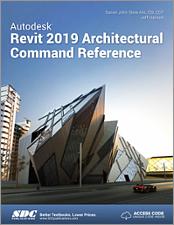
Testing duct, piping and electrical systems.Creating HVAC and plumbing systems with automatic duct and piping layouts.Creating electrical circuits with electrical equipment, devices, and lighting fixtures and adding cable trays and conduits.Creating plumbing networks with plumbing fixtures and pipes.
 Creating HVAC networks with air terminals, mechanical equipment, ducts, and pipes. Creating spaces and zones so that you can analyze heating and cooling loads. Working with linked Revit files and CAD files. Inserting and connecting MEP components and using the System Browser. Working with the Autodesk Revit software's basic viewing, drawing, and editing commands. The examples and practices are designed to take the students through the basics of a full MEP project from linking in an architectural model to construction documents. The learning guide will also familiarize students with the tools required to create, document, and print the parametric model. The learning guide is intended to introduce students to the software's user interface and the basic HVAC, electrical, and piping/plumbing components that make the Autodesk Revit software a powerful and flexible engineering modeling tool. To take full advantage of Building Information Modeling, the Autodesk (R) Revit (R) 2019.0: Fundamentals for MEP guide has been designed to teach the concepts and principles of creating 3D parametric models of MEP system from engineering design through construction documentation.
Creating HVAC networks with air terminals, mechanical equipment, ducts, and pipes. Creating spaces and zones so that you can analyze heating and cooling loads. Working with linked Revit files and CAD files. Inserting and connecting MEP components and using the System Browser. Working with the Autodesk Revit software's basic viewing, drawing, and editing commands. The examples and practices are designed to take the students through the basics of a full MEP project from linking in an architectural model to construction documents. The learning guide will also familiarize students with the tools required to create, document, and print the parametric model. The learning guide is intended to introduce students to the software's user interface and the basic HVAC, electrical, and piping/plumbing components that make the Autodesk Revit software a powerful and flexible engineering modeling tool. To take full advantage of Building Information Modeling, the Autodesk (R) Revit (R) 2019.0: Fundamentals for MEP guide has been designed to teach the concepts and principles of creating 3D parametric models of MEP system from engineering design through construction documentation.





 0 kommentar(er)
0 kommentar(er)
